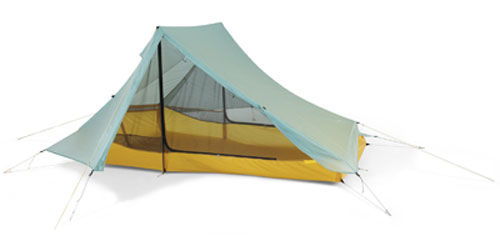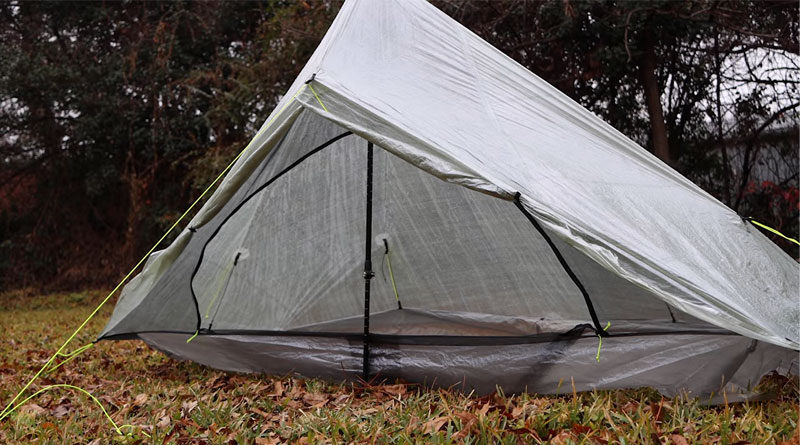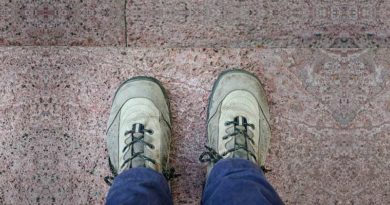Are Trekking Pole Tents Worth It?
As the name suggests, these tents use your trekking poles to set up instead of tent poles. It saves you some weight if you are doing ultralight backpacking. You can use your gear (your trekking poles in this case) in multiple ways, which is one of the main principles of weight saving for backpacking. Over the past few years, these tents have also gained a lot of popularity among backpackers. Because they are compact, lightweight, and easy to carry in your backpack.
And just to be very clear, these types of tents do work. I’ve been using tents with these designs (like the Flash Air 2 mentioned below) quite a few times. They performed well even above Treeline and the High Sierra and I’ve even used them guiding in Alaska.
Trekking Pole Tent: Pros
If you already carry trekking poles in your backpack, you can save some extra weight by leaving tent poles at home. Also, if you’ve got foldable trekking poles, you can switch to a smaller backpack because foldable poles take up a lot less space in your backpack. You can save around 8 or more ounces of weight by using these tents.
Using trekking pole tents doesn’t mean you are compromising the comfort and storm worthiness of a traditional tent. These tents still provide a lot of features and they are pretty durable and storm worthy. Also, these tents have many of the features that a traditional tent can offer. You can get a decent double or single-wall tent at an affordable price.
These tents are also easy and quick to set up. They require fewer stakes and guy lines than traditional tents. These tents can also be pitched fly first. This means your inner tent doesn’t get wet if it is raining. Once you stake it out, it provides a sturdy structure that can withstand rain and wind.
REI Co-op Flash Air 2: Best Trekking Poles Tent

The Flash Air 2 is a sub-2-pound 2-person tent that costs under $400. That’s a big deal because tents with these specs are usually in the range of $600 to even $800. Or put another way, it’s only one pound per person for full bug and rain protection and it won’t cost you an arm and a leg. Second, it’s a type of ultralight backpacking tent that you might not be familiar with. It’s a hybrid double-wall/single-wall trekking pole supported tent. And yeah that’s a mouthful. This tent cost $150 less and it’s a pound lighter than most traditional backpacking tents like the Big Agnes Copper Spur 2. So, that’s about 30% less cost and 30% less weight for a 2-person tent.
What I like: Good area-to-weight ratio, 24 square feet of living space for each pound.
What I don’t: Adjusting all tie-outs and getting a taut pitch can be a bit fiddly.
Trekking Poles Tents: Cons
Compared to traditional tents, these types of tents do come with some disadvantages:
Dependency on trekking poles
Requiring trekking poles to set up means you have to carry trekking poles on every trip. This can be an additional expense for you if you don’t own a pair already.
Not freestanding
These tents are not freestanding. You must securely anchor them to the ground with the help of guylines. If you are planning to camp on the sand, rocky ledges, snow, or frozen ground, you can’t use this tent. In this case, it is better off purchasing a freestanding tent that needs standard tent poles to set up.
Limited headroom and space
These tents don’t provide much interior space and headroom. Your headroom is usually limited by the height of the trekking poles that you are using. Most of these tents are designed for either one or two persons. So, it limits your space if you are sharing your tent with another person. Traditional dome and tunnel-shape tents provide much better interior space and headroom.
Less stable
Because these tents rely on trekking poles for support, so they are less stable in high winds or uneven terrain. This can make them less comfortable to sleep in and may require adjustments.
No vestibule area
Most of these tents don’t offer a vestibule area. This means you have to leave your gear outside the tent every time.
Limited pitching options
As I mentioned earlier, you can’t set these up on a wide variety of surfaces like sand, rocky ledges, snow, and frozen ground. So, you have very limited options available.
Can’t use your trekking poles
If you want to use your trekking poles, you would have to collapse your tent in order to use your poles.
Conclusion
In conclusion, trekking poles can be worth considering if you are a solo backpacker and want a lightweight tent. It can also be a good option for those who want a basic tent with just enough features. However, if you are willing to carry some extra weight, a traditional dome or tunnel-shaped tent is always your best friend. It will offer some extra features and you can set it up virtually anywhere.




